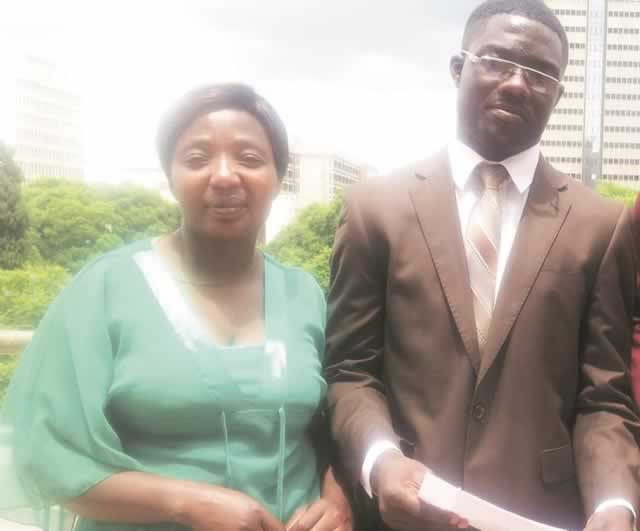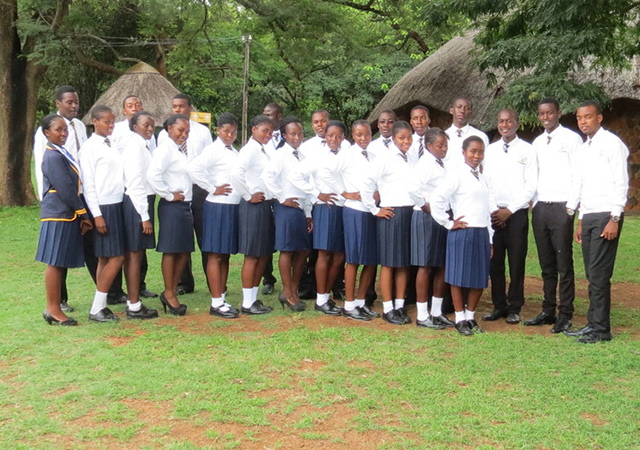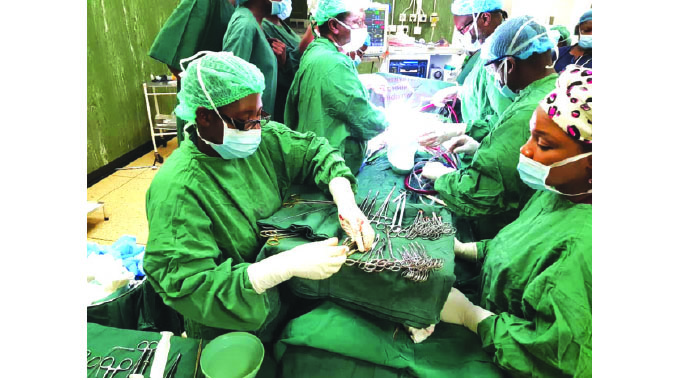A-Level results show growing interest in STEM subjects


Munashe Mandizvidza, who scored 29 points in the 2015 Zimsec A-Level examinations, and his mother Mrs Daphne Mandizvidza
Christopher Farai Charamba Features Correspondent
The moment of truth arrived for 2015 A-Level students last week when Zimsec released the results of the November 2015 exams.
For many this is a defining moment in their young lives and will have a significant bearing on their future, good or bad.
A total of 41 563 candidates registered and sat for the examinations, an increase of 2 520 students or 6,4 percent from the previous 2014 academic period.
Along with an increase in the number of candidates there was also a rise in the pass rate of the A-Level examinations, five percentage points up from 82,6 percent in 2014 to 87,6 percent for those in schools and a 6,1 percentage points increase from 57,6 percent to 63,7 percent for private candidates.
The 2015 academic year was one which saw the issue of curriculum change coming to the fore.
In September, Cabinet approved the revision of the schools’ curriculum and the process has since begun this year with the Ministry of Primary and Secondary Education initiating phase one.
One of the critical points stressed in the curriculum change was the need to focus on Science, Technology, Engineering and Mathematics (STEM) subjects.
Higher and Tertiary Education, Science and Technology Development Minister Professor Jonathan Moyo last year pointed out that there was an urgent need to re-evaluate the educational system and content to align it with current market demands.
“Thousands of people today have irrelevant degrees, making them unemployable; these degrees do not speak to the current market demands.
“Although we are currently experiencing an economic slowdown, we need to equip our students with relevant degrees which solve our problems,” he said.
Professor Moyo noted that at a tertiary level most institutions in Zimbabwe are inclined towards commercial subjects, and as such few students are interested in STEM subjects with low enrolment in those programmes.
“We are not doing enough since 52 percent of the total enrolment is in humanities while 29 percent are doing commercials and only 19 percent are doing STEM. We need to reflect on this anomaly,” he said.
President Mugabe also made an observation on the importance of transforming the education system in Zimbabwe while speaking at the Education Expo and Conference in 2015.
“Yes, we are some 90 percent up there in terms of literacy rate, but we have been saying to ourselves it is not just literacy rate we are aiming for, but we would want to get the real essence of what they call education at its highest level and for that, I am delighted to hear that there is teacher education taking place in science and mathematics — the areas that we most need and the areas also that are relevant to the present times, the present age, this is the age of technology, ICT,” he said.
The amendments to the school curriculum are set to promote STEM subjects as well as important life skills. What is particularly encouraging to note from November 2015 Zimsec A-Level examinations is the significant increase in candidates in Science, Technology, Engineering and Mathematics (STEM) subjects.
According to a Zimsec November 2015 examinations Advanced Level results analysis, STEM subjects such as Mathematics, Physics, Chemistry, Biology and Computing all had an increase in the number of candidates who took the subject from 2014 to 2015 and an increase in the pass rate in 2015.
Mathematics had an 18 percent increase of candidates in schools from 8 202 candidates in 2014 to 9 681 in 2015 and a 26 percent increase of private candidates. The pass rate for Mathematics increased by 4,14 percentage points from 68,04 in 2014 to 72,18 in 2015 in schools.
A similar trend was noticed in Biology where there was an 11,9 percent increase in candidates in schools and an 8,53 percent change in the pass rate up from 51,56 percent in 2014 to 60,09 percent last year.
Chemistry also saw a 7 percent increase in candidates and an 80,22 percent pass rate up by 5,87 percent.
Although Physics had a 19,6 percent increase in candidates in schools there was a decline of 1,99 percent in the pass rate down from 85,79 to 83,80 percent.
The most notable of the STEM courses was Computing which saw an 80,5 percent increase in candidature from 277 in 2014 to 500 in 2015 with a corresponding 98 percent pass rate, up 6,02 percent from the previous year.
Primary and Secondary Education Minister Dr Lazarus Dokora said the performance of the November 2015 candidates was commendable in most subjects and that there was a marked improvement of about 5 percent from the previous year 2014.
“Going forward, measures are underway to continue to boost candidature for Maths and Science subjects at A-Level. This is in order to increase the outflow to higher and tertiary education for the realisation of value addition and beneficiation in line with Zim-Asset,” he said.
Dr Dokora acknowledged that there were still areas that needed to be addressed in the changing of the curriculum as well as the need to ensure that schools are well equipped for these changes.
“As we mainstream non-formal education we anticipate more exchanges between the formal school system and lifelong learning dimension to address challenges in Science and mass education such as the sharing of laboratory facilities.
“I sincerely hope that with improved supervision, teacher capacity development, teacher professional standards and school infrastructure under the umbrella of the new curriculum, standards will continue to improve,” he said.
As was the case in 2014, the pass rate for girls was higher than that for boys at 85,4 percent for male candidates and 90,5 percent for females, up from the previous year’s 80 percent and 86,5 percent respectively. Despite this, a worrying trend is the gender-gap in certain subjects; there are fewer girls in STEM courses. According to ZimStat 2012, at tertiary level only 17 percent of women were enrolled in Computer Science and only 7 percent in Engineering.
Harare provincial education director Mr Christopher Kateera said girls were being overlooked in various fields.
“One of the most concerning trends in regards to women’s presence in the science technology fields is the increasing gender-gap,” he said.
Mr Kateera added that Government’s wish was for every girl to have a better understanding of what a career in technology was and also how to take up such.
Dr Dokora said the Ministry of Primary and Secondary Education had taken note of the gender pattern in the pass rate and recognised the need to promote optimal performance for both male and female learners at all levels of the system.
In line with the increased number of candidates in STEM subjects at the school level, universities should now drive enrolment towards STEM courses at their institutions. Students coming out of high school should be encouraged to pursue courses in line with their abilities rather than the perceived ease of a course.
The 2015 A-Level results show that the current crop of students has a keen interest in STEM subjects and the capacity to excel in them. Institutions of higher learning should therefore nourish and promote this interest and ability.
Feedback: [email protected]







Comments